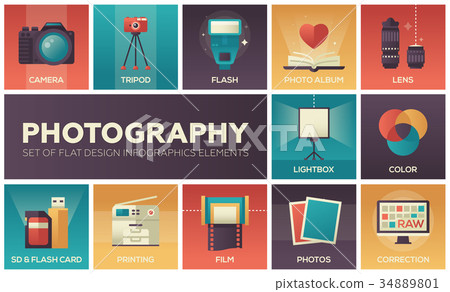Recognizing Structure: The Basics Every Digital Photographer Must Know
Recognizing Structure: The Basics Every Digital Photographer Must Know
Blog Article
Content Develop By-Christiansen Roberson
When you pick up your electronic camera, recognizing the fundamentals of structure can dramatically raise your photography. Techniques like the Rule of Thirds, Leading Lines, and efficient framing aren't simply standards; they're necessary tools that can change your images from ordinary to exciting. By mastering these principles, you'll find yourself capturing not simply images, however tales that resonate. But what occurs when you start flexing these regulations? Discovering that can cause unexpected and powerful results in your job.
The Rule of Thirds
One of the most vital principles in digital photography is the Policy of Thirds. This strategy assists you create balanced and interesting structures, drawing the viewer's eye to one of the most essential aspects in your photo.
Think of splitting professional linkedin photographer into a grid of 9 equivalent parts with 2 straight and two upright lines. By placing your topic along these lines or at their intersections, you normally enhance your image's visual appeal.
Instead of centering your topic, try positioning it off away. This approach presents space and context, allowing visitors to explore the surrounding area.
For professional profile photographer , place the horizon along the leading or bottom 3rd line, emphasizing either the skies or the land.
When you're catching pictures, line up the subject's eyes along the top third line for an extra vibrant look.
Experimenting with the Regulation of Thirds will certainly cause even more engaging and professional-looking photos.
Leading Lines
Take advantage of the power of leading lines to direct your audience's eye via the frame and produce a sense of depth in your digital photography.
Leading lines are all-natural or manufactured aspects that draw attention and lead the customer's look towards the primary subject. They can be anything from roadways, rivers, fencings, and even darkness.
When you incorporate leading lines, consider just how they can boost your composition. Begin by determining solid lines in your scene.
Placement yourself to utilize these lines successfully, ensuring they lead to your prime focus. For example, a pathway leading into a landscape can stimulate a feeling of trip and invite the visitor to discover the scene.
Explore different angles and viewpoints. Sometimes, capturing from a lower angle can develop more vibrant leading lines, while a greater perspective can give a wider context.
Framing and Equilibrium
Framing and equilibrium play critical functions in producing visually engaging pictures. When you mount your topic, you're essentially creating a boundary that draws the customer's eye directly to the centerpiece. You can utilize natural environments like branches, doorways, or windows to attain this effect.
Do not take too lightly the power of framework; it includes deepness and context, making your picture extra appealing.
Balance, on the other hand, makes sure that your composition really feels steady and unified. You can accomplish balance via symmetry or by distributing aesthetic weight uniformly throughout the frame. If https://geographical.co.uk/nature/geophoto/item/3656-tips-and-tricks-for-lockdown-photography put a huge subject on one side, think about adding smaller components on the opposite side for it.
This strategy stops your picture from really feeling unbalanced and creates a feeling of efficiency.
Experiment with both mounting and balance in your digital photography. Take numerous shots from different angles, changing just how you frame your subject and exactly how you distribute components within the scene.
As you technique, you'll establish an intuitive understanding of exactly how to create compositions that resonate with viewers and evoke feeling. Keep in mind, mastering these components can change a normal picture right into a striking masterpiece.
Conclusion
By understanding composition strategies like the Regulation of Thirds, Leading Lines, and Framework, you can raise your digital photography to new elevations. http://corrine9drew.xtgem.com/__xt_blog/__xtblog_entry/__xtblog_entry/37575013-discover-exactly-how-to-choose-the-perfect-electronic-camera-customized-to-your-digital-photography-style-and-requires-however-are-you-taking-into-consideration-all-the-crucial-variables?__xtblog_block_id=1#xt_blog help you produce well balanced, engaging images that draw viewers in and inform compelling tales. Keep in mind to experiment and trust your reactions as you exercise these essentials. With time and commitment, you'll transform normal shots into imaginative expressions that genuinely reverberate with your audience. Maintain shooting, and let your imagination shine!
